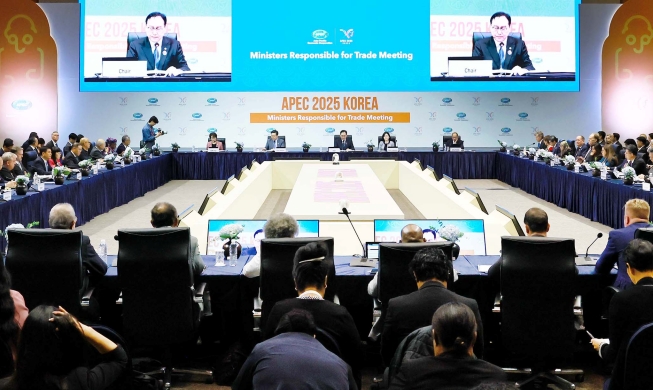The global winter sporting event will be held in Pyeongchang, Jeongseon and Gangneung, all in Gangwon-do Province, from Feb. 9 to 25, 2018.
In preparation for the winter sport fiesta, Gangwon is rapidly completing its new construction projects, working on stadiums and arenas for the various sports, disciplines and other Olympic-related activities.
A total of 12 stadiums, seven for skiing and five for skating, will be used in the 2018 Olympic and Paralympic Winter Games. Skiing disciplines will be held mostly in Pyeongchang and Jeongseon, while skating events will be held in Gangneung.
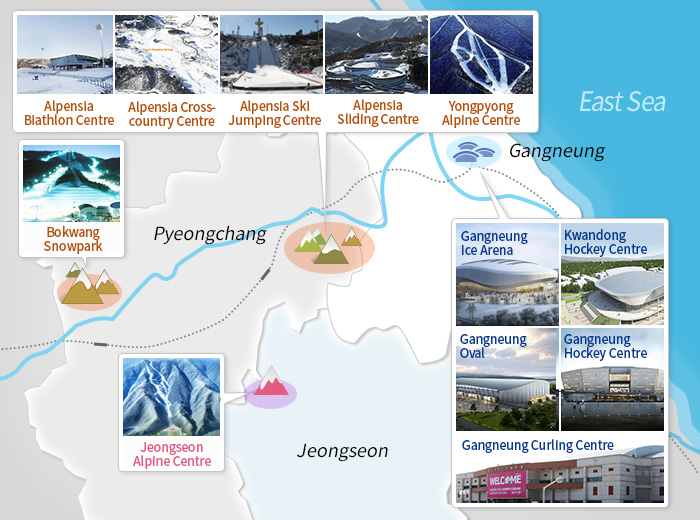
A total of 12 stadiums will host the PyeongChang 2018 Olympic and Paralympic Winter Games next year.
Construction is scheduled to be complete by October this year, so that organizers can then start to prepare full-swing for the Olympics in November. The five skating stadiums are almost complete already, as their "rate of overall construction" is at 99.7 percent, organizers say. The five stadiums are the Gangneung Ice Arena, the Gangneung Hockey Centre, the Kwandong Hockey Centre, the Gangneung Oval and the Gangneung Curling Centre. The seven stadiums for the skiing events, including the Alpensia Sliding Centre and the Yongpyong Alpine Centre, are officially 92 percent complete.
One of the main characteristics of the PyeongChang Olympics is the high accessibility among venues. All the stadiums can be reached within 30 minutes from the Alpensia Sports Park, so that both athletes and visitors can benefit such proximity. Concerning this, the 2018 organizing committee said that, “This is the most compact location of venues in the history of the Olympic Games, which is highly valued by international sport bodies, and we have the best stadium structures ever that center on the athletes and the sports themselves."
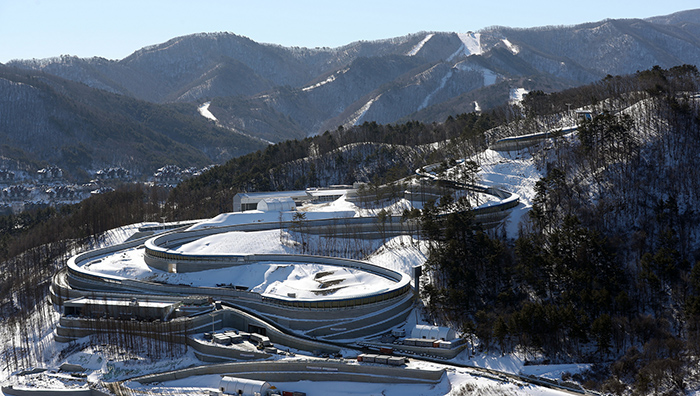
Luge, bobsleigh and skeleton will be held at the Alpensia Sliding Center during the 2018 PyeongChang Winter Olympics. The stadium is an 'ice start training venue' where athletes can train throughout the year.
The venues themselves have also received international recognition. At the Alpensia Sliding Center, where the luge, bobsled and skeleton will take place, a special refrigeration pipe was developed, which shortened the construction period by 18 months. It can accommodate up to 7,000 people in the stands, and is an "ice start training venue" where athletes can train throughout the year.
A consideration for environmental preservation is another noticeable part of the venue construction process. To minimize damage to nearby forests, the Jeongseon Alpine Center negotiated with the International Olympic Committee and the International Ski Federation (FIS), and came up with uniform routes for both men's and women’s events, a first in the history of Winter Olympics. It also designed its courses by detouring around seven zones of rare vegetation and habitats.
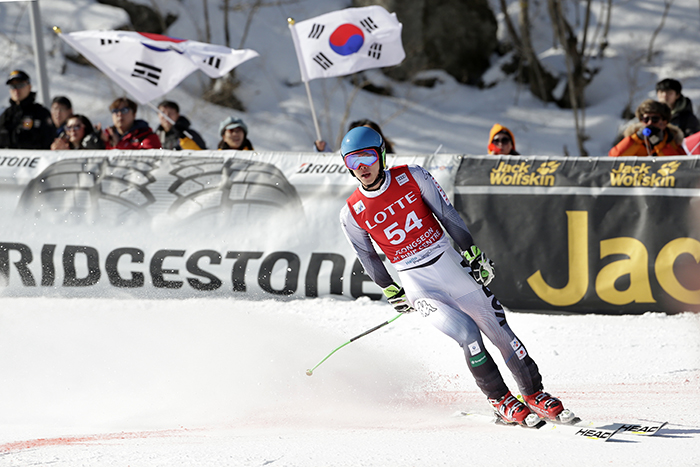
Kim Hyeon-tae crosses the finish line during a men's World Cup super-G race, a test event for the PyeongChang 2018 Winter Olympics, at the Jeongseon Alpine Center in Jeongseon in February 2016. The Jeongseon Alpine Center designed its courses so as to minimize damage to nearby forests and to minimize any effects on the environment.
Construction at facilities for the athletes and the media are also flawlessly underway. These include the Olympic Plaza where both the opening and closing ceremonies will be held, the athletes’ village and the international broadcasting centre (IBC), where more than 80 broadcasters from around the world will air their Olympic coverage. The IBC will be finished in June and the remaining facilities will be finished by September.
Transport networks are also being expanded a year ahead of the Olympics. The goal is that people will be able to travel between Seoul and Gangwon-do Province within one hour. The Gwangju-Wonju Expressway, opened in November last year, is one of the latest traffic links in the country. It shortened the driving time between Incheon International Airport and Pyeongchang to 2 hours and 43 minutes, from the prior 3 hours and 2 minutes. Another traffic link is the 120.2-kilometer Wonju-Gangneung double-track railroad, which will open at the end of 2017. When this railroad is complete, it will take only 98 minutes to get to Pyeongchang from Incheon International Airport, and 1 hour and 12 minutes from Seoul to Gangneung.
A series of expressways linking existing roads and Gangneung, where the skating is to be held, are also under construction. The 122.2-kilometer Donghae Expressway, completed in September last year, connects five cities and towns, including Samcheok, Donghae, Gangneung, Yangyang and Sokcho. A new 18.5-kilometer expressway linking Sokcho and Yangyang was also completed in November, which shortened travel time between Samcheok and Sokcho to 1 hour and 14 minutes, from the earlier 2 hours and 7 minutes.
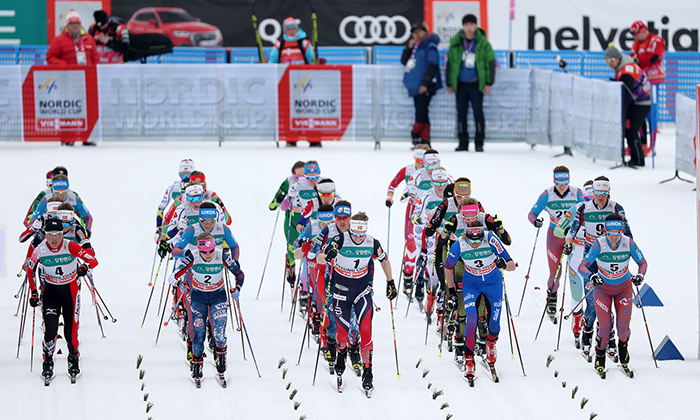
A series of test events are being held across Gangwon-do Province these days. Athletes from around the world participate in the women’s skiathlon finals at the FIS Cross-Country World Cup at the Alpensia Cross-Country Center in Pyeongchang, Gangwon-do Province, on Feb. 4.
Efforts to build stadiums, facilities and other venues have led to favorable responses from athletes from around the world who have participated in the test events for the next year’s PyeongChang 2018 Olympic and Paralympic Winter Games. Approximately 5,500 athletes from 90 countries will compete in 17 official pre-Olympic events. One such event was the FIS Cross-Country World Cup, which ran from Feb. 3 to 5 at the Alpensia Cross-Country Center. The participating athletes from 13 countries all said that the conditions at the competition venue were "wonderful." In February this year, nine test events will be held in six disciplines. The test events will last until April 20, when the 2017 World Para Ice Hockey World Championship A-Pool will finish.
By Yoon Sojung
Korea.net Staff Writer
Photos: Jeon Han, Korea.net Photographer, Yonhap News
arete@korea.kr
